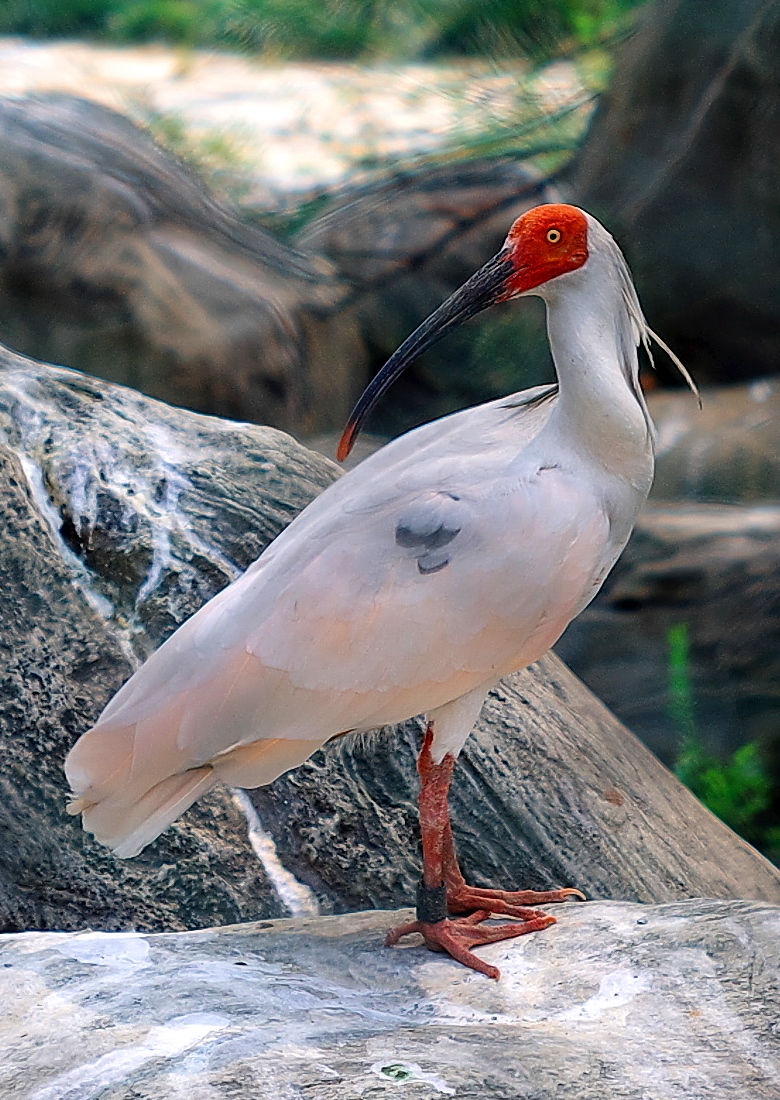
This website is creatred for demonstration. The main content of this website is based on wikipedia and some data could be wrong. You can find the source code of this website at link.

The crested ibis (Nipponia nippon), also known as the Japanese crested ibis, Asian crested ibis or toki, is a large (up to 78.5 cm (30.9 in) long), white-plumaged ibis of pine forests, native to eastern Asia. Its head is partially bare, showing red skin, and it has a dense crest of white plumes on the nape. It is the only member of the genus Nipponia.
At one time, the crested ibis nested in the Russian Far East, Japan, and Mainland China, and was a non-breeding visitor to the Korean Peninsula and Taiwan. It has now disappeared from most of its former range, and the only natural (non-reintroduced) population occurs in Shaanxi, China. After years of protection, now crested ibises are distributed in following countries:
The last wild crested ibis in Japan died in October 2003, with the remaining wild population found only in Shaanxi Province of China, until the reintroduction of captive bred birds back into Japan in 2008. They were previously thought to be extinct in China as well, until their rediscovery in 1981. Extensive captive breeding programs have been developed by Japan and China to conserve the species. They are on China's State Protection List. In 2002, there were a total of 130 colonies in China. Northwest Shaanxi province's research center has a history of 26 crested ibis fledglings including artificial and natural incubation. On July 31, 2002, five out of seven crested ibis chicks hatched at an incubation center in northwest Shaanxi province. This was the highest ever recorded number of chicks that hatched. The parents of the chicks were chosen from 60 ibis pairs raised at that research center.
| Country | Crested Ibis Population |
|---|---|
| China | 5000 |
| Japan | 1200 |
| Korean | 800 |
| Total | 7000 |
Ongoing habitat loss, small population size, limited range, winter starvation and persecution[clarification needed] in the 20th century brought the endangered species to the brink of extinction. The crested ibis has been listed in Appendix I of the conservation treaty CITES.
The London Zoo had crested ibises from 1872 until 1873. Outside China, only Japan and South Korea keep the species.